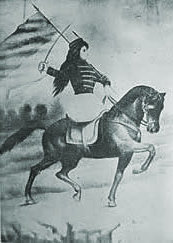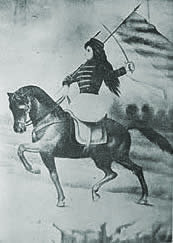
|
Women and Independence in Latin America An exploration of women's involvement in the Latin American Wars of Independence |

|

|
Women and Independence in Latin America An exploration of women's involvement in the Latin American Wars of Independence |

|
Other names: La Manzaneda, La Jubonera
Gender:Female
Ethnic origen: Mestiza
Events:
| 1770 | - | La Paz | - | Not applicable | - | She was born in La Paz, Bolivia on 28 October 1770. |
| 1809 | - | La Paz | - | Patriot | - | On 16 July 1809 she led the people of Santa Bárbara into supporting the patriots. |
| 1811 | - | La Paz | - | Unknown | - | She went into hiding after the defeat of Huaqui on 20 June 1811. |
| 1814 | - | La Paz | - | Unknown | - | She participated in the taking of La Paz on 26 September 1814. |
| 1816 | - | La Paz | - | Patriot | - | She was convicted for disloyalty to the king then tortured and then executed on 16 November 1816. |
Connections:
Women executed independence cause (Bolivia)Biography:
She was born in La Paz, on 28 October 1770, the natural daughter of María Josefa Manzaneda from the shanty town, Mecapaca. She is described as tall, with dark, beautiful kind eyes, long black dark that she wore in plaits over her shoulders. She wore a finely embroidered silk jacket, a white short with gold and pearl buttons, a multi-coloured woollen shawl fastened with a gold brooch, a black hat with a red lining like an umbrella, a hooped woollen skirt of 100 threads fastened at the waist, white embroidered socks and kidskin shoes. She wore large, gold earrings with pearls and a ring on each finger. She married Pablo González and had a son, José María. She was interested in the independence cause and following González's death worked as a spy for the patriots, going into the barracks and taking in messages hidden in her skirt. She worked tirelessly and with good humour to increase working class support, and negotiating arms and ammunition. On 16 July 1809 she led the people of Santa Bárbara in supporting the independence movement. When the royalists took La Paz, she managed to deceive the royalists by disguising herself as an Indian and walking by night to Río Abajo where she hid in her family home backup came from the patriot forces from Argentina. After the defeat of Huaqui (20 June 1811), she returned to Mecapaca where she worked as a jubonera, thus earning her the name "la jubonera", but she continued to follow the independence cause. When she learned of Pinelo's rebellion in Cuzco, she offered her support and led the people in the taking of La Paz on 26 September 1814. The royalists took their revenge in November 1816 when General Ricaforte had Manzaneda arrested and brought before him, he sentenced her to be imprisoned. She was stripped, her hair was cut, she was given a shield and a notice with the death penalty written on it, then made to ride through the streets of La Paz on an ass, she was whipped with 50 lashes on the four corners of the plaza then shot in the back. (Urquidi, 184-187)
Described as a commoner, she was sentenced to be publicly reprimanded for disloyalty to the king on 16 November 1816. (Gaceta de Caracas, 14/5/1817, p.1022.)
References:
Pérez Vila, Manuel (editor). (1983) Gaceta de Caracas
Urquidi, José Macedonio (1918) Bolivianas ilustres, heroinas, escritoras, artistas, Tomo I